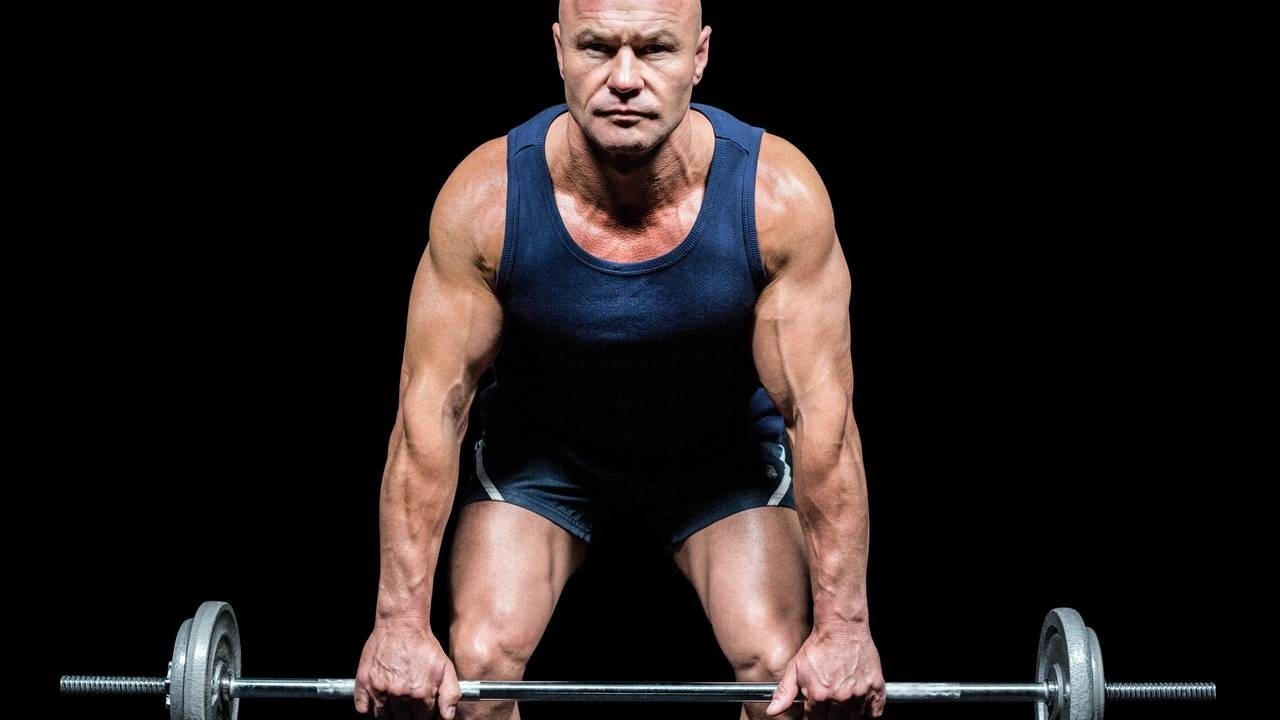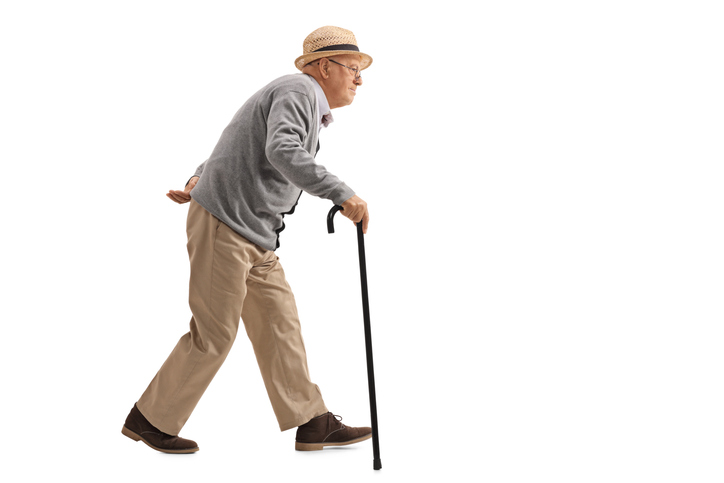Why Older Adults Should Most Definitely Prioritize Strength Training

If I asked you what the most important form of exercise is for anyone over the age of 60, what would you say? A lot of individuals would say something like walking, and while aerobic exercise should be without question a top priority, I’d make an argument that strength training should have an even higher priority.
While some will quickly poo-poo that statement, stick with me for a minute while I make my case. Again, just to be clear, this isn’t to say aerobic exercise like walking isn’t beneficial. In fact, it’s something that all adults should regularly look to do for their overall health and wellness. Simply put, we’ve not been designed to sit, but to move! The more you move, the better you move and the more you sit the worse you move.
But the real reason I’m preaching to you today about strength training is that while I see a lot of older adults these days wearing Fitbits and other smartwatches to count their steps and monitor activity (which I think is great), unfortunately a lot of them don’t do any type of a strength or resistance training (which I think is not so great).
I suppose a lot of this has to do with faulty beliefs and misconceptions about strength training only being associated with muscle building. What they’re unfortunately not realizing or choosing to disregard is the very real presence of muscle loss also known as "muscle atrophy" that is associated with aging.
Did you know that those who don’t perform any type of resistance training can expect to lose between 3-5% of their muscle mass each decade after the age of 30? No fooling, you can check out the following reference from Harvard on preserving muscle mass with aging to see for yourself. They also reference a 2015 report from the American Society for Bone and Mineral Research that found people with age related muscle loss had twice the risk of having a low-trauma fracture from a fall. This can be a very big deal, especially if it’s fracture in the lumbar-pelvic region.
The good news is you can reverse muscle loss, even gain lean muscle, at ANY age with strength training, supportive nutrition, and a healthy lifestyle!
Numerous studies have shown that even as little as two months of strength training can boost muscular strength by as much as 40% while halting the process of muscle atrophy.
Some of the numerous benefits of completing strength training as you get older.
Strength training in older adults helps to maintain independence
Muscular strength enables you to complete everyday tasks with ease. Don’t wait until you experience difficulties with little things like picking up a grandchild, getting out of the tub, climbing stairs, putting on a pair of socks, etc. There is quite simply no replacement for strength when it comes to staying active and being independent.
Strength training in older adults helps you to avoid falls, and if you were to fall you’re less likely to suffer a fracture.
Like just mentioned in the study above, muscle strength is essential for balance and proprioception and helps to minimize the risks of hip fractures and other injuries common with falls in older adults. This fifty-dollar word “proprioception” is just the scientific term used to describe your body’s mind-muscle awareness. Think about it as an awareness of space or sensing of stability. An example of proprioception in action would be stepping out of the shower onto a wet floor. If you have good proprioception, your body responds via the neuromuscular system to fire the muscles necessary for stability and you’re able to regain your footing before falling to the floor. With poor sensory ability or proprioception, your muscles fail to respond in the same way and therefore you’re going down.
Here’s the kicker now that you get the idea. Walking, swimming, and other aerobic exercise, while again these are really good to do, they won’t do much to help you improve your proprioception. This is where strength training, specifically functional strength training comes in. An exercise like a medicine ball reach pattern can really help improve strength in the legs while also improving mobility and proprioception.
And as you probably already know, strength training helps to improve bone density which is why even if you were to fall, your risk of suffering a fracture is reduced the stronger your bones are.
Strength training in older adults makes it easier to maintain your weight
A lot of older adults struggle with gaining weight more easily than when they were younger due to the muscle loss and decrease in hormones. Muscle burns more blood sugar (glucose) than fat does so it’s essential that you maintain lean muscle mass to keep your weight at a healthy level. Relatively speaking, the more lean muscle you have, the higher your rate of metabolism will be, meaning weight management will come easier.
Strength training in older adults helps to improve posture
This is a big benefit, I mean a REALLY big benefit of strength training. Picture in your mind for a moment an image of an elderly man or woman walking down the street with a cane. They’re hunched over at their shoulders and hips while walking by shuffling their feet.

We’ve all seen this and it’s not a pretty picture of aging. However, we can accept this as a part of the process, OR embrace the truth that posture can be improved by increasing muscular strength so long as we don’t wait until osteoporosis develops.
I frequently use this imagery example when painting a picture to middle age and older prospective clients. With muscle atrophy and loss of strength that comes from aging (and not doing anything to counter it) the body will respond accordingly. As the muscles in the upper back get weak and inhibited, the head starts to tilt forward, the shoulders round and we start seeing the hunched over posture at the upper body.
As the muscles in the lumbar-pelvic region get weak and inhibited (primarily the glutes and core muscles), the hips start to tilt back bringing the lower body in the hunched over position. This combination is the double whammy that creates the picture we described above. Look, this doesn’t have to be your destiny. The two primary areas I have my older clients work on strengthening is their upper back musculature along with the glutes and core muscles. By addressing these weak areas, we can improve mobility, movement, and posture all at the same time! This my friends is something that walking alone does not and can not do.
Understanding more on why walking alone is not enough to prevent muscle loss
The reason walking alone doesn’t do much to prevent muscular atrophy is because there’s little resistance being applied against gravity on the larger muscle groups. Sure, you’re using your legs, but not in a manner that is providing eccentric loading through resistance being placed on the muscles. Just so you know, it’s the muscles being applied under a load or some form of resistance that does the work to improve bone density and offset muscle loss.
What kind of strength training should older adults look to perform?
Functional strength training with things like free weights, cable machines, medicine balls, kettlebells, resistance bands, and bodyweight exercises works best. And you don’t need to use all of these forms of resistance, any one of them or combination will work just fine. Strength training machines can be very helpful for building muscular strength, but for optimal results look to also incorporate functional movements where you reach, rotate, push, pull, and change levels on your feet- just like you do in everyday life. I also like using functional strength training as we can work on things like mobility and balance at the same time. While I didn’t get much into stretching as this was more of a discussion about strength training, I’d highly recommend a daily stretch routine as this can be invaluable for older adults.
How often should older adults do strength training?
My recommendation is for older adults to do strength training 2-3 times per week. The majority of my older clients who are active perform strength training twice per week in combination with their other forms of physical activity, be it exercise or recreational activity. This works well and can produce really good results.
If you’re not currently doing strength training or are uncertain if you’re doing the best exercises and routines for your individual needs, getting guidance from a fitness professional can pay big dividends. Regardless of whether you get personal training or simply get a workout program design, having a professional provide you with recommendations on what exercises are best for you can make a big difference. Don’t guess at this or worse yet watch what other people are doing in the gym and play “monkey see, monkey do.” Not only is this likely to be ineffective, it can also lead you to possibly getting injured.
It doesn’t matter if you go to a gym or want to do some routines in the comfort of your own home. Look I get it, with the COVID pandemic not everyone is crazy about the idea of going back into a crowded gym full of people. One of the benefits of a smaller, private facility like Shaping Concepts is there are no crowds to deal with as workouts are by appointment only with a limited number of people on the floor at any given time.
And seriously, it’s not about having to invest in a lot of equipment either. Truth be told, you could perform effective workouts at home with just a few pieces of inexpensive equipment that wouldn’t’ take up a lot of space.
I’d be more than happy to consult with you on recommendation for your specific wants and needs. If I can be of service at any time please don’t hesitate to let me know. I hope that you’re motivated to continue doing strength training if already incorporating into an exercise routine, and if not that I’ve encouraged to look at doing so.
Shane Doll CPT, CSCS is a fitness professional and expert on exercise and body transformation for middle age and mature adults. He seeks to make a difference in the lives of others by providing instruction and coaching with a servant-based attitude. Since 2004 his Charleston personal training programs have helped over 3,000 Lowcountry residents.


